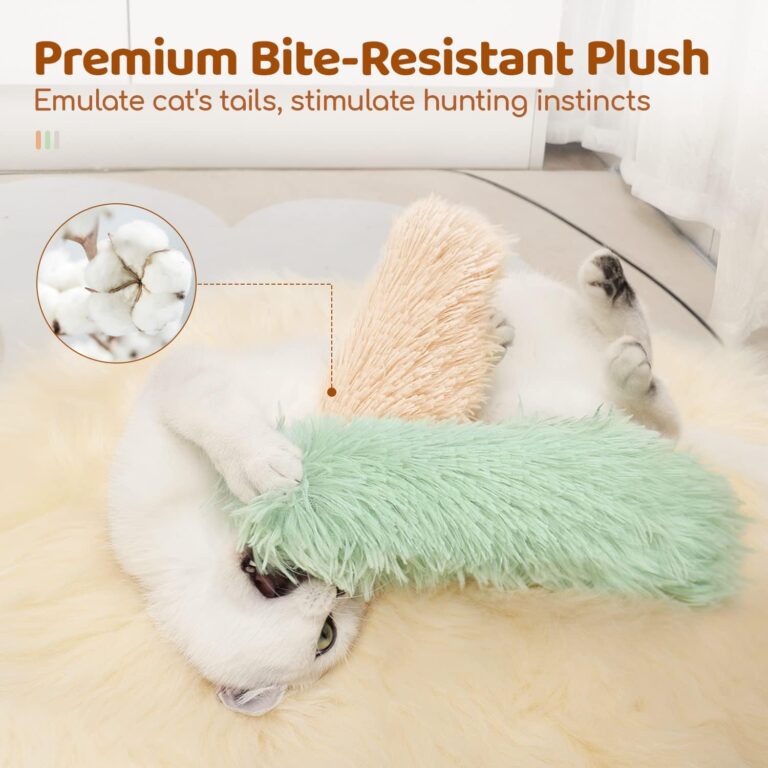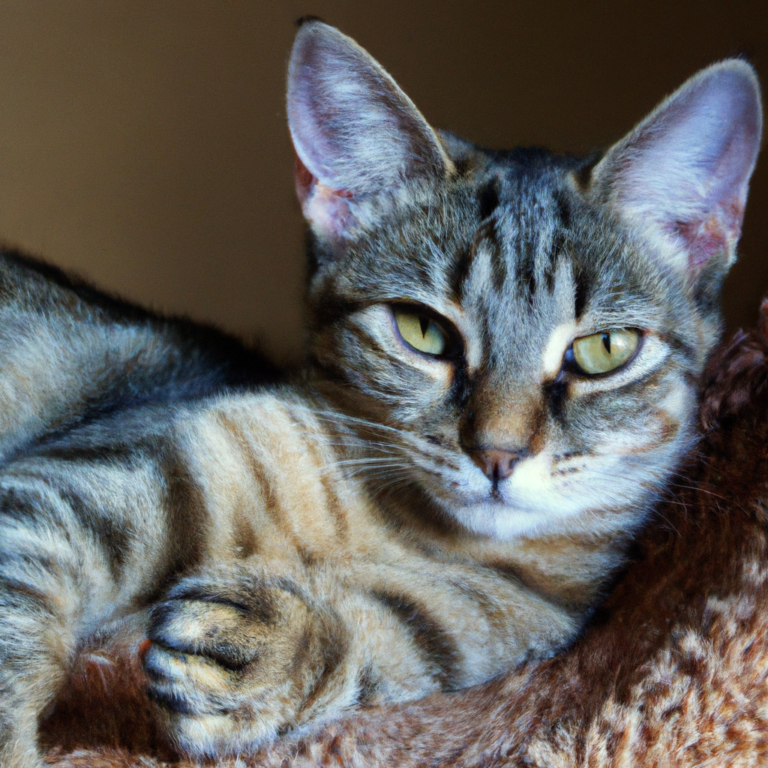How To Stop A Female Cat From Spraying
If you’ve ever dealt with a female cat who has developed the unpleasant habit of spraying in your home, you know just how frustrating and costly it can be. The lingering smell, constant cleaning, and potential damage to furniture can quickly become a burden. Don’t worry though, because today we’ll be sharing some effective tips and strategies to help you put an end to your female cat’s spraying behavior. So say goodbye to the pungent odor and hello to a clean, fresh-smelling home!

Understanding why female cats spray
Spraying behavior in female cats can be concerning for pet owners. It is important to understand the causes and differences between spraying and urinating, as well as the significance of addressing this behavior.
Causes of spraying behavior
Spraying behavior in female cats can be triggered by a variety of factors. These can include environmental factors such as changes in the home or new furniture, social factors like the presence of other cats or territorial conflicts, and even medical issues that may cause discomfort or stress.
The difference between spraying and urinating
Spraying behavior is different from regular urination. When a female cat sprays, she typically stands up and releases a small amount of urine against a vertical surface. This behavior is a way for cats to mark their territory and communicate with other cats. On the other hand, urination is done in a squatting position and occurs in a larger amount.
The importance of addressing spraying behavior
It is important for owners to address spraying behavior in female cats as untreated spraying can become a persistent issue. Spraying can lead to a strong and unpleasant odor in the home, damage to furniture and belongings, and potential conflicts among cats. By addressing the issue, owners can maintain a clean and comfortable environment for both themselves and their feline companions.
Identifying the triggers
To effectively address spraying behavior, it is crucial to identify the triggers that may be causing the behavior. These triggers can be categorized into environmental factors, social factors, and medical issues.
Environmental factors
Changes in the environment, such as moving to a new house or introducing new furniture, may be triggers for spraying behavior. Cats are sensitive to changes in their surroundings, and they may spray as a way of marking their territory in response to these changes.
Social factors
The presence of other cats or conflicts among cats in the household can also trigger spraying behavior. Cats are territorial animals, and spraying can be a way for them to assert dominance or mark their territory in the presence of other cats.
Medical issues
In some cases, spraying behavior may be caused by underlying medical issues. Urinary tract infections, bladder stones, or other health concerns can cause discomfort or stress in female cats, leading to spraying behavior. Therefore, it is important to consult with a veterinarian to rule out any medical conditions that may be contributing to the spraying.
Creating a clean and comfortable environment
Creating a clean and comfortable environment for your female cat is essential in addressing spraying behavior. Here are some strategies to consider:
Provide multiple litter boxes
Having multiple litter boxes in different areas of the house can help reduce spraying behavior. Cats prefer clean and accessible litter boxes, so make sure to clean them regularly and place them in quiet and secluded areas to provide privacy.
Choose the right litter and litter box
Choosing the right litter and litter box can also make a difference. Some cats may prefer a specific type of litter, so it may take some trial and error to find the one that your cat prefers. Similarly, the size and design of the litter box should be appropriate for your cat’s needs.
Regularly clean the litter boxes
Regularly cleaning the litter boxes is crucial to maintaining a clean and odor-free environment. Cats are more likely to avoid using a dirty litter box, which can contribute to spraying behavior. Scoop the litter boxes daily and replace the litter as needed.
Create a stress-free environment
Reducing stress in your cat’s environment can also help address spraying behavior. Provide plenty of hiding spots, scratching posts, and vertical spaces for your cat to explore. Additionally, consider using pheromone diffusers or sprays, which can help create a calming atmosphere for your cat.
Addressing social factors
Social factors, such as conflicts among cats or a lack of routine, can trigger spraying behavior. Here are some tips to address these factors:
Introduce a consistent routine
Establishing a consistent routine can help reduce stress and provide a sense of security for your cat. Establish regular feeding times, play sessions, and quiet time to create a predictable environment for your cat.
Provide enough playtime and exercise
Engaging your cat in regular play sessions and providing opportunities for exercise can help reduce stress and prevent boredom. Interactive toys, puzzle feeders, and regular playtime can help redirect your cat’s energy and reduce spraying behavior.
Minimize conflicts and competition among cats
If you have multiple cats, it is important to minimize conflicts and competition among them. Provide separate resources such as food bowls, litter boxes, and resting areas to prevent territorial disputes. Additionally, consider using pheromone diffusers or sprays to help create a harmonious environment.
Avoid punishment
Punishing your cat for spraying behavior can worsen the issue and cause additional stress. Instead, focus on positive reinforcement by praising and rewarding your cat for appropriate behaviors such as using the litter box. This will help create a positive association and encourage your cat to continue using the litter box.

Managing territorial behavior
Managing territorial behavior is essential in addressing spraying behavior. Here are some strategies to consider:
Spaying or neutering your female cat
Spaying or neutering your female cat can significantly reduce territorial behavior, including spraying. This procedure can help eliminate hormonal influences that may contribute to spraying behavior.
Providing enough vertical space
Cats are naturally inclined to climb and perch in high places. Providing enough vertical space, such as cat trees or shelves, can help satisfy your cat’s need for height and territory. This can help reduce spraying behavior by providing additional areas for your cat to mark and feel secure.
Using pheromone sprays or diffusers
Pheromone sprays or diffusers, such as Feliway, can help create a calming environment for your cat and reduce territorial behavior. These products mimic the natural facial pheromones that cats use to mark their territory, creating a sense of familiarity and security.
Considerations for introducing new pets
If you are introducing a new pet to your household, careful introductions and gradual adjustments are important. Provide separate spaces and resources for each pet to prevent conflicts and spraying behavior. Consult with a professional if you need guidance on introducing new pets to your existing feline family.
Dealing with medical issues
If you have addressed environmental and social factors but are still experiencing spraying behavior, it is important to consult with a veterinarian to rule out any underlying medical issues. Here are some steps to consider:
Consulting with a veterinarian
Schedule a visit with your veterinarian to have your cat examined. The vet may conduct tests to identify any underlying medical conditions that may be contributing to the spraying behavior.
Treating underlying medical conditions
If a medical condition is identified, your veterinarian will recommend appropriate treatment options. Following the recommended treatment plan can help alleviate any discomfort or stress your cat may be experiencing, thereby reducing spraying behavior.
Administering behavioral medication if necessary
In certain cases, behavioral medication may be prescribed to help manage spraying behavior. This should be done under the guidance of a veterinarian or veterinary behaviorist, as medication should only be used when necessary and after considering the potential risks and benefits.

Utilizing behavior modification techniques
Behavior modification techniques can help address spraying behavior and encourage appropriate litter box use. Here are some techniques to consider:
Positive reinforcement training
Using positive reinforcement, such as treats or praise, can help encourage your cat to use the litter box. Whenever your cat uses the litter box instead of spraying, reward them with a treat or verbal praise to reinforce the desired behavior.
Utilizing deterrents
Deterrents can be used to discourage your cat from spraying in undesirable areas. These can include placing aluminum foil or double-sided tape in the areas where your cat has sprayed, as cats generally dislike the texture and will avoid those spots in the future.
Using environmental enrichment
Environmental enrichment involves providing mental and physical stimulation for your cat. This can include puzzle toys, interactive feeders, or even hiding treats around the house. By keeping your cat engaged and stimulated, you can help reduce stress and decrease the likelihood of spraying behavior.
Implementing vertical territory
As mentioned earlier, providing vertical spaces can help satisfy your cat’s need for territory. Consider installing shelves or providing sturdy cat trees that offer elevated perching spots. This will allow your cat to mark their territory in appropriate ways and may reduce the need for spraying.
Seeking professional help
If you have tried various strategies and are still struggling with your cat’s spraying behavior, it may be beneficial to seek professional help. Here are some options to consider:
Consulting with a feline behaviorist
A feline behaviorist is a professional who specializes in cat behavior. They can assess your cat’s spraying behavior and provide personalized advice and strategies to address the issue. They may also recommend additional behavior modification techniques or environmental adjustments.
Working with an animal behaviorist
An animal behaviorist can provide guidance on addressing spraying behavior in female cats and offer solutions tailored to your specific situation. These professionals have extensive knowledge and experience in animal behavior modification and can help you implement effective strategies.
Considering specialized cat training programs
Some organizations offer specialized cat training programs designed to address spraying behavior. These programs often focus on positive reinforcement training and behavior modification techniques. Look for reputable programs in your area and consider enrolling your cat in one if necessary.

Monitoring and consistency
Once you have implemented strategies and solutions to address your cat’s spraying behavior, it is important to monitor their progress and maintain consistency in your approach. Here are some tips for monitoring and consistency:
Regularly monitoring the cat’s behavior
Keep an eye on your cat’s behavior, especially during the initial stages of implementing changes. Note any improvements or setbacks and make adjustments accordingly. Regular monitoring will help you identify what strategies are working and what may need to be modified.
Consistently applying strategies and solutions
Consistency is key in addressing spraying behavior. Make sure to consistently apply the strategies and solutions you have implemented. This includes maintaining a clean environment, providing plenty of resources, and addressing any social or environmental triggers that may arise.
Making necessary adjustments
Over time, you may need to make adjustments to your approach. Every cat is unique, and what works for one may not work for another. Pay attention to your cat’s response to the strategies you have implemented and be prepared to make necessary adjustments along the way.
Conclusion
Understanding and addressing spraying behavior in female cats is crucial for maintaining a clean and harmonious environment. By identifying triggers, creating a comfortable environment, addressing social factors and medical issues, utilizing behavior modification techniques, seeking professional help when needed, and maintaining consistency, you can effectively reduce spraying behavior and provide your cat with a happier and healthier life. Remember, patience and understanding are key when addressing spraying behavior in female cats, so continue to provide love and support to your feline companion throughout the process.







